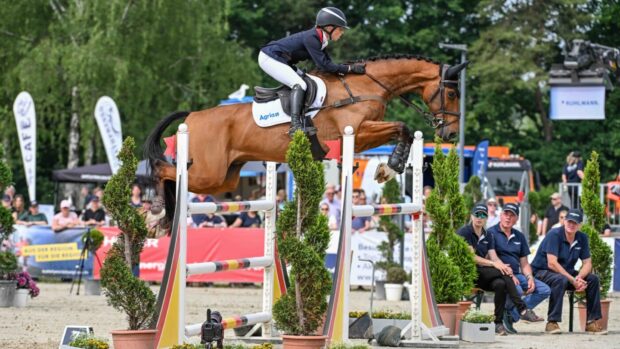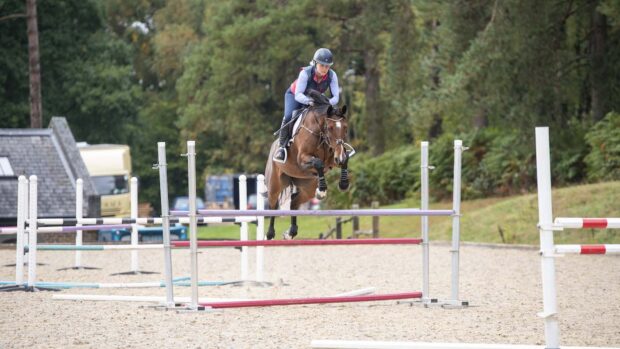Showjumper Sarah Lewis, who competes up to two-star level after switching from three-star eventing, explains why some horses rush and shares a useful jumping exercise to help retrain horses that tend to do so, as well as tips to help tackle the issue at shows
It can be quite unnerving riding a horse that is inclined to rush his fences. It makes it difficult for the rider to judge a good distance to the fence, and can result in the horse getting quicker and quicker as their showjumping round progresses. So if you have a horse like this, don’t despair as there are some simple jumping exercises for horses that rush that can help resolve the problem.
Riders may instinctively want to take their leg off a horse that is very forward going and increase their rein pressure. In most cases this is the opposite of what the rider should do, because the more they pull, the more likely the horse is to rush. Horses often start to rush because they feel the rider isn’t encouraging them to have enough impulsion and so try to communicate to the rider that they would like a more positive approach in order to easily clear the fence. Horses like these are often very intelligent, so you have to come up with ways to keep their minds with their rider on the approach to the fence.
A useful jumping exercise for horses that rush
1. Start by encouraging the horse to accept the rider’s leg, and work on both horse and rider being comfortable with a consistently stronger rhythm in the canter. Riding counter canter loops in the school can be very helpful. Start with a 5m loop on the long side, then increase the depth of the loops. In order to keep the horse in counter canter the rider must support the horse with their inside leg, but without encouraging the horse to accelerate. This helps horse and rider learn that the leg doesn’t always mean go faster.
2. Next put up a cross pole with a placing pole on the ground 3.5m either side of the jump. The two poles, especially the pole after the fence, will encourage the horse to lower their head and neck to look at what the question is and work out where to put their feet. Establish a good canter before coming to the pole, cross pole, pole exercise. On the approach ride very square turns – not only the corner before the fence, but the previous corner too. The square turns help the rider control the pace without pulling at the horse. The rider needs to be looking at the fence before they turn the corner and focus on maintaining the rhythm, rather that looking for a set stride or distance.
3. If the horse rushes or is a little quick through the exercise, keep the horse straight on landing and ride a downward transition to halt. Once the horse is standing still, the rider should take a breath and praise the horse, then put their leg quietly on, and repeat. The partnership may need to practise this a few times, but should find that once the ability to ride a straight halt on landing is established, the horse will be ready to come back to the rider after a jump, allowing them to rebalance the canter before negotiating a turn to the next jump. This tends to be more effective than pulling the horse up on the approach or turning away when they rush.
4. As with any training exercise, it is important to know when to stop. Once the horse is listening and an improvement has been made, pat him, and move on to something else, or maybe take him for a little hack. It is important for both horse and rider to remain as calm as possible, but using this exercise frequently can encourage the horse to listen more to their jockey.
5. Taking this training forward to a show, think carefully about how many practise jumps the horse really needs. Give the horse enough time and space to warm up but don’t jump more than is necessary. Once in the ring the rider should pick up a good, strong canter rhythm before approaching the start, ride a fairly short approach to the first fence, and use good quality turns around the cource to help maintain the canter rhythm.
- To stay up to date with all the breaking news from major shows throughout 2025, subscribe to the Horse & Hound website
You may also be interested in:

7 jumping questions you thought were too obvious to ask
There are some jumping questions that seem too obvious to ask — so we've asked them for you...

Piggy March — the magic of using gridwork

10 things successful riders don’t do and you should avoid too

Subscribe to Horse & Hound magazine today – and enjoy unlimited website access all year round




